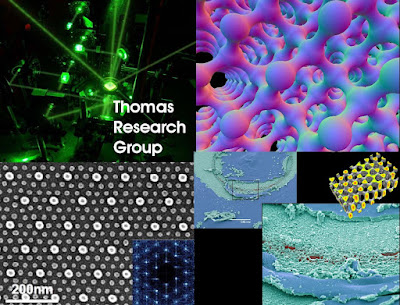Collective intelligence is a shared or group intelligence that emerges from the collaboration and competition of many individuals. Collective intelligence appears in a wide variety of forms of consensus decision making in bacteria, animals, humans, and computer networks. The study of collective intelligence may properly be considered a subfield of sociology, of business, of computer science, of mass communications and of mass behavior—a field that studies collective behavior from the level of quarks to the level of bacterial, plant, animal, and human societies. The concept also frequently appears in science fiction as telepathically linked species and cyborgs.
[...]
According to Don Tapscott and Anthony D. Williams, collective intelligence is mass collaboration. In order for this concept to happen, four principles need to exist. These are openness, peering, sharing and acting globally.
[...]
According to Don Tapscott and Anthony D. Williams, collective intelligence is mass collaboration. In order for this concept to happen, four principles need to exist. These are openness, peering, sharing and acting globally.
- Openness
- In the early stage of communications technology, people and companies are reluctant to share ideas, intellectual property and encourage self-motivation because these resources provide the edge over competitors. However, in time people and companies began to loosen hold over these resources as they reap more benefits in doing so. Allowing others to share ideas and bid for franchising will enable products to gain significant improvement and scrutiny through collaboration.
- Peering
- This is a form of horizontal organization with the capacity to create information technology and physical products. One example is the ‘opening up’ of the Linux program where users are free to modify and develop it provided that they made it available for others. Participants in this form of collective intelligence have different motivations for contributing, but the results achieved are for the improvement of a product or service. As quoted, “Peering succeeds because it leverages self-organization – a style of production that works more effectively than hierarchical management for certain tasks.”
- Sharing
- This principle has been controversial with the question being “Should there be a law against the distribution of intellectual property?” Research has shown that more and more companies have started to share some, while maintaining some degree of control over others, like potential and critical patent rights. This is because companies have realized that by limiting all their intellectual property, they are shutting out all possible opportunities. Sharing some has allowed them to expand their market and bring out products faster.
- Acting Globally
- The advancements in communication technology has prompted the rise of global companies, or e-Commerce that has allowed individuals to set up businesses at low to almost no overhead costs. The influence of the Internet is widespread, therefore a globally integrated company would have no geographical boundaries but have global connections, allowing them to gain access to new markets, ideas and technology. Therefore it is important for firms to get updated and remain globally competitive or they will face a declining rate of clientèle.
Kevin Kelly: Predicting the next 5,000 days of the web
http://www.ted.com At the 2007 EG conference, Kevin Kelly shares a fun stat: The World Wide Web, as we know it, is only 5,000 days old. Now, Kelly asks, how can we predict what's coming in the next 5,000 days?Clipped from: YouTube - Davos 2010 - IdeasLab with MIT - Thomas Malone
Davos 2010 - IdeasLab with MIT - Thomas Malone
deasLab with MITJoin the Massachusetts Institute of Technology in the IdeasLab to discover the latest insights and perspectives on the nature of intelligence
Clipped from: MIT Center for Collective Intelligence

While people have talked about collective intelligence for decades, new communication technologies—especially the Internet—now allow huge numbers of people all over the planet to work together in new ways. The recent successes of systems like Google and Wikipedia suggest that the time is now ripe for many more such systems, and the goal of the MIT Center for Collective Intelligence is to understand how to take advantage of these possibilities.
Collective intelligence has existed for at least as long as humans have. Tribes of hunter-gatherers, nations, and modern corporations all act collectively with varying degrees of intelligence. But this ancient phenomenon is now occurring in dramatically new forms. For example:
- Google uses the knowledge millions of people have stored in the World Wide Web to provide remarkably useful answers to users' questions
- Wikipedia motivates thousands of volunteers around the world to create the world's largest encyclopedia
- Innocentive lets companies easily tap the talents of the global scientific community for innovative solutions to tough R&D problems
Sources:
- Collective intelligence - Wikipedia, the free encyclopedia
- YouTube - Kevin Kelly: Predicting the next 5,000 days of the web
- YouTube - Davos 2010 - IdeasLab with MIT - Thomas Malone
- MIT Center for Collective Intelligence
- MIT Center for Collective Intelligence



































